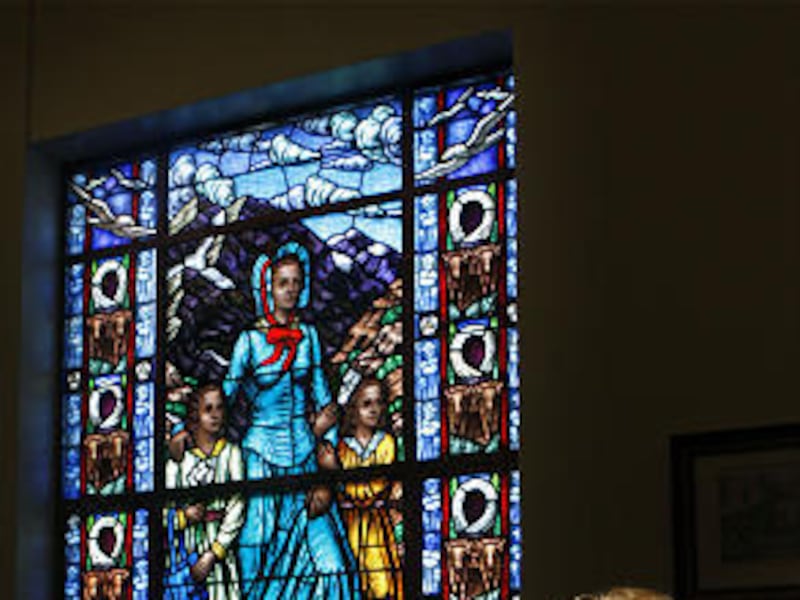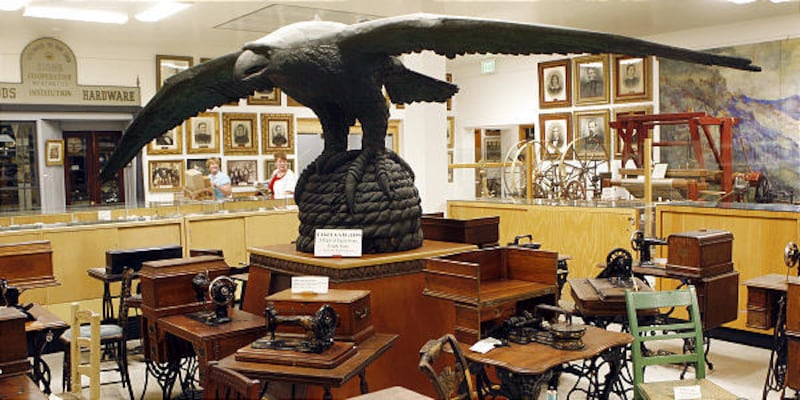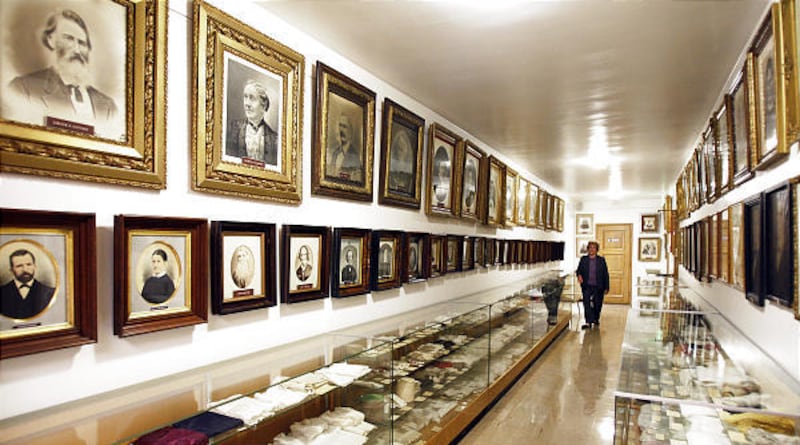Time changes everything: What we do, how we do it, what we use, how we dress, what we see, who we are.
But it's important to remember all those things that came before, the past that made us who we are today.
"If we don't remember, we can't learn," says Bette F. Barton, president of the International Society Daughters of Utah Pioneers. "And if we don't learn, we can't live on into the future in a better manner."
For 60 years, the Pioneer Memorial Museum, operated by the DUP, has remembered, collected, preserved and displayed artifacts that tell us of the pioneer part of our past.
In recent months the museum has undergone an extensive renovation to upgrade electrical systems, replace attic insulation, clean and paint the interior.
It has been a tremendous effort, Barton says. "This building was built in 1950. The electrical system was not made to work with our 15 computers." At the same time, all 264 display cases were moved and cleaned; all the portraits were taken down, cleaned and labeled; some new groupings of displays were put together. All the while, "the integrity of the building was maintained. The lights were not just replaced, for example; they were taken down and rebuilt."
Pioneer Memorial Museum will be rededicated on Friday, with a ribbon-cutting ceremony by Gov. Gary Herbert on the museum steps, beginning at 11:30 a.m., and followed by a day of tours and entertainment.
This extensive upgrade is the latest chapter in what is a rich and significant history, not only of the building, but of the desire to preserve and protect the pioneer legacy.
The formation of the Daughters of Utah Pioneers grew out of the fervor and festivities of the 1897 Jubilee celebrating the 50th anniversary of the entrance of the pioneers into the Salt Lake Valley.
For those first 50 years, the pioneers were too busy forging ahead to do much looking back. But at the 50-year milestone, they paused to acknowledge a remarkable achievement.
In 1901, Annie Taylor Hyde, the daughter of LDS Church President John Taylor, invited 46 women to her home. All were descendants of those original pioneers.
"Ever since the Pioneer Jubilee," she told them, "I have felt deeply impressed with the importance and desirability of the children of the pioneers becoming associated together in forming an organization."
The goals of the group were many-fold: to share bonds of love and friendship; to form branch societies in communities around the state; to perpetuate patriotism; to commemorate the efforts of those who were "responsible for the founding of our commonwealth"; to compile genealogies of Utah pioneers.
By 1903, another task was added. The Daughters realized the value and importance of collecting artifacts related to the pioneers.
Their first "relic hall" was established in the LDS Tithing Office, on the corner of South Temple and Main, with an exhibit case made out of a cabinet bookcase belonging to Brigham Young.
When they outgrew this space, they moved to the Lion House. When this space was needed for other things, they were given room in the Vermont Building, which then housed the Deseret Museum. In 1915, the museum moved to Temple Square. When the State Capitol Building was completed in 1917, the Daughters were also given exhibit space in the basement, where they also had an office and a small gift counter. But even before that, the Daughters began dreaming of a place of their own.
Flora B. Horne, custodian of relics in the Vermont Building, later explained: "We all had many visions of the Daughters of Utah Pioneers as we worked among the 'silent witnesses' of pioneers days … Our dreams of the memorial hall seemed real. We pictured a magnificent building that told in every line, wall, pillar and feature our Utah history. We were tired of shifting about and wanted a building of our own."
On Sept. 24, 1911, at the birthday party of Sarah Jenne Cannon, Horne "suggested a need for a fund for a memorial building. Everyone present supported the plan. The first money toward the building fund was a five-dollar gold piece placed on the table that day by Emily Richards."
Slow but steady fund-raising continued for the next couple of decades. By 1936, the Daughters had decided that the triangle of land at the top of Main Street would be an ideal location. But it took until 1941 for the Utah Legislature to approve the lease of the triangle to the Daughters, contingent upon their depositing $50,000 as a good-faith payment.
"At the time, the building fund had a total of $11,415," Barton says. But in 1941, Kate B. Carter became the president of the organization. "She met the challenge. She worked so diligently. Many feel that without her, the museum would never have been built."
DUP fund-raising efforts were combined with war-relief efforts. The Daughters sponsored paper and rag drives; they collected scrap iron from yards all over the state.
"They actually received national recognition for the war-relief work," Barton says. "And all the money they received went to their fund. By 1943, they had $41,000 in the bank, and the state appropriated $250,000 for construction of the museum."
However, another stumbling block arose. A number of property owners and other groups launched a protest, claiming it was unconstitutional for taxpayer money to go toward the building. A long, drawn-out lawsuit ensued, which eventually went to the Utah Supreme Court.
"Eventually, the court found in favor of the DUP," Barton says, "so the state owns the building, and we lease it. But because of the delay, the Daughters' contribution also was increased. That was when Kate Carter wrote 'Heart Throbs of the West.' The volumes sold for $2.50. They raised enough money for everything they needed, and we've published a book every year since," Barton says.
Pioneer Memorial Museum was dedicated on July 23, 1950. Soon after that, fund-raising began again: to add on the Carriage House, which could accommodate the large vehicles and other items in the collection. It was dedicated in 1973. As a project for the 1996 statehood centennial, the DUP also raised money to have a horse-drawn, steam-powered fire engine restored.
Today, the DUP has more than 100,000 artifacts; 26,000 negatives; 2,600 pictures hanging on the walls; an art collection with works by Dan Weggeland, C.C.A. Christensen and others; a stained glass window by Avard Fairbanks; and other treasures. There are 125 satellite museums throughout Utah, but also in Arizona, Idaho, Nevada and Wyoming.
"So many of our artifacts are of things that helped the pioneers live and survive. But there are also a lot that brought beauty into their lives," Barton says. "They had so little to work with, but they still sought beauty."
She loves walking about the museum, and especially looking at all the pictures on the walls. "I learn something new every time I go through." She hopes other people will do the same. That they will look at these pioneers and pioneer objects and learn and remember. "Remembering is the ultimate form of tribute to those valiant souls who made the desert blossom as a rose," she says. "That heritage is our responsibility."
e-mail: carma@desnews.com





